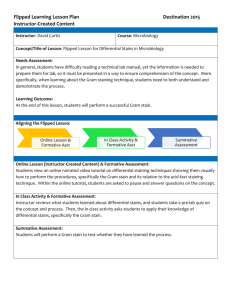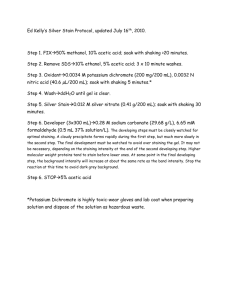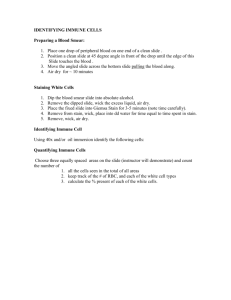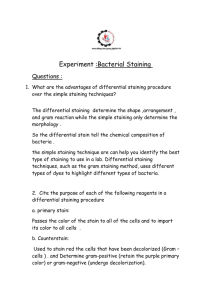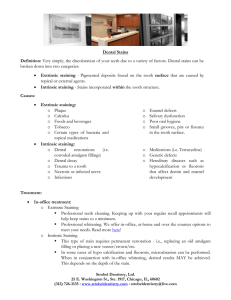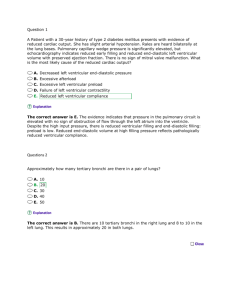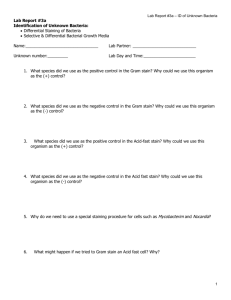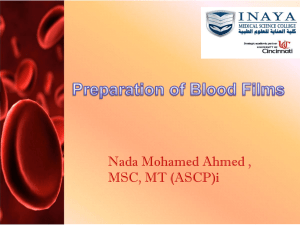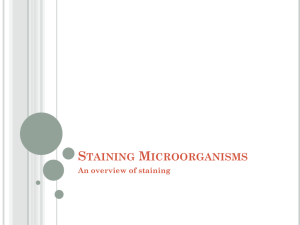Exercise 2 — Preparation & Staining
advertisement
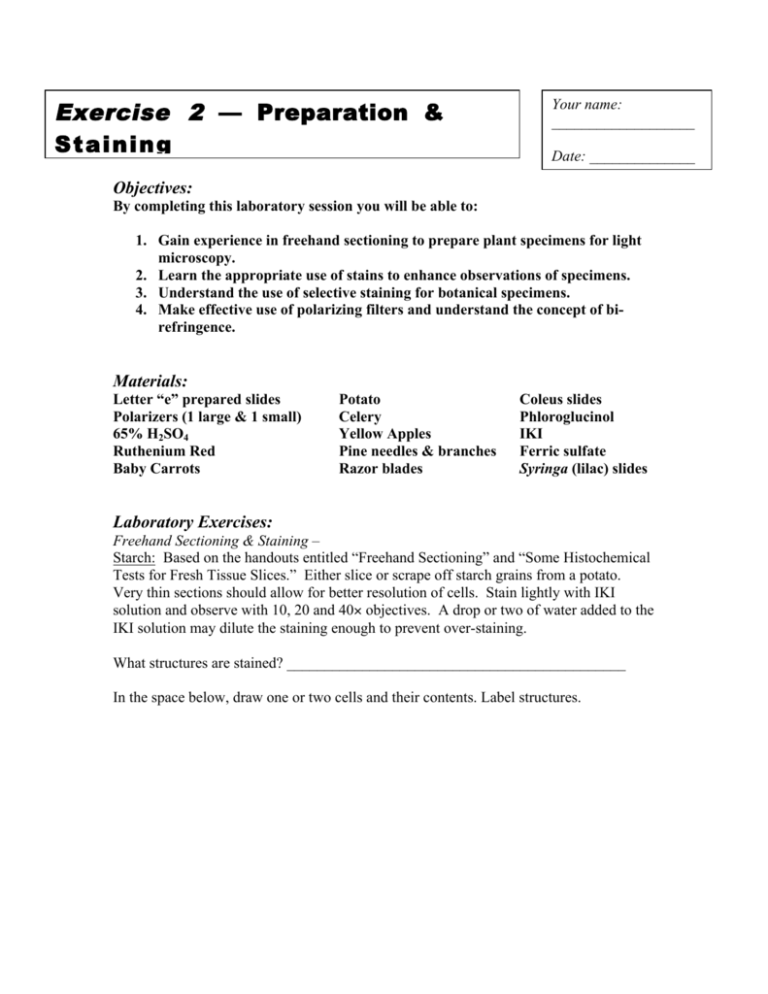
Exercise 2 — Preparation & Staining Your name: ___________________ Date: ______________ Objectives: By completing this laboratory session you will be able to: 1. Gain experience in freehand sectioning to prepare plant specimens for light microscopy. 2. Learn the appropriate use of stains to enhance observations of specimens. 3. Understand the use of selective staining for botanical specimens. 4. Make effective use of polarizing filters and understand the concept of birefringence. Materials: Letter “e” prepared slides Polarizers (1 large & 1 small) 65% H2SO4 Ruthenium Red Baby Carrots Potato Celery Yellow Apples Pine needles & branches Razor blades Coleus slides Phloroglucinol IKI Ferric sulfate Syringa (lilac) slides Laboratory Exercises: Freehand Sectioning & Staining – Starch: Based on the handouts entitled “Freehand Sectioning” and “Some Histochemical Tests for Fresh Tissue Slices.” Either slice or scrape off starch grains from a potato. Very thin sections should allow for better resolution of cells. Stain lightly with IKI solution and observe with 10, 20 and 40× objectives. A drop or two of water added to the IKI solution may dilute the staining enough to prevent over-staining. What structures are stained? _____________________________________________ In the space below, draw one or two cells and their contents. Label structures. 2 Pectic substances: Make a thin section of apple from the surface inwards approx. 5-10 mm to obtain tissue. Stain with ruthenium red and observe (allow 1-2 min. for stain to maximize). Also, make a thin slice of potato through the “skin.” Mount on a slide and stain with ruthenium red. What structures are stained? ________________________________________________ Cellulose: Make thin sections of celery stalk and pine stem. Stain with the IKI/H2SO4 method. (Refer to handout sheet on Histochemical Tests.) Caution: Use care when handling strong acids as H2SO4 so as not to damage yourself, clothing or the microscopes! Describe the staining reaction as a function of cell types: _________________________ _______________________________________________________________________. Lignin: Prepare thin cross-sections of a pine branch and stain with toluidine blue-O solution. Do you observe metachromasia? Draw a cross-section of your sample and label structures that show selective staining. Repeat the above procedure with phloroglucinol. How differently do the stains appear? (Caution: Use care as phloroglucinol contains a strong acid!) Tannins: Look for tannins in pine needle cross-sections. The baby carrots will help in obtaining thin slices. Stain with ferric sulfate (works similar to ferric chloride). What color do the tannins appear? ___________________________________________ Where are they found? ____________________________________________________ Polarizing Filters A polarizing filter screens light in all but one plane to obtain ordered light. As you rotate one of the polarizers, those parts of the specimen, which appear to change in color and 3 intensity, are said to possess birefringence and are usually crystalline or para-crystalline at the molecular level. Observe birefringence of several specimens available in lab (e.g. letter “e,” potato, celery, pine). Experiment both with and without stain. Draw one example of birefringence and name the source/structure. Permanent stains Observe prepared slides of Syringa (lilac) leaves and Coleus leaf abscission to illustrate staining using the permanent stains, Safranin (red) and Fast Green. What structures are stained with safranin (red)? ________________________________________________________________________ What structures are stained with fast green? ____________________________________ ________________________________________________________________________

